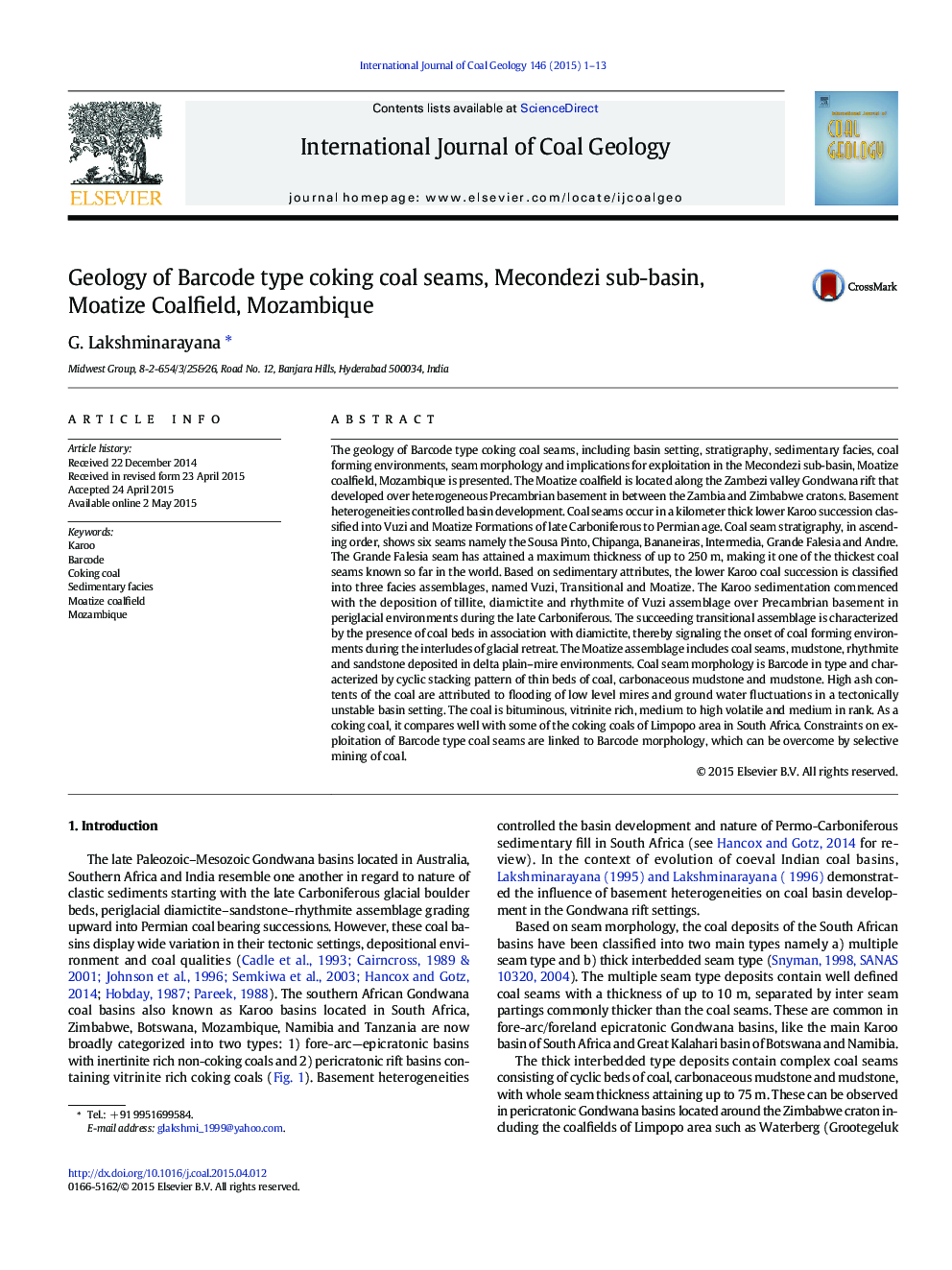| کد مقاله | کد نشریه | سال انتشار | مقاله انگلیسی | نسخه تمام متن |
|---|---|---|---|---|
| 1752915 | 1522554 | 2015 | 13 صفحه PDF | دانلود رایگان |
• Basin setting of the Zambezi valley Karoo coal basin in Mozambique is outlined.
• Sedimentary facies and coal seam morphology have been refined. Periglacial-delta plain–mire complex model is presented.
• A 250 m thick Grande Falasie coal seam, one of the thickest coal seams in the world, has been reported. Coal is coking type.
• Constraints on exploitation are linked to Barcode seam morphology, represented by cyclic stacking of coal and non-coal beds.
• Selective mining by Surface Miner is proposed to enhance the economic viability of coal mining project.
The geology of Barcode type coking coal seams, including basin setting, stratigraphy, sedimentary facies, coal forming environments, seam morphology and implications for exploitation in the Mecondezi sub-basin, Moatize coalfield, Mozambique is presented. The Moatize coalfield is located along the Zambezi valley Gondwana rift that developed over heterogeneous Precambrian basement in between the Zambia and Zimbabwe cratons. Basement heterogeneities controlled basin development. Coal seams occur in a kilometer thick lower Karoo succession classified into Vuzi and Moatize Formations of late Carboniferous to Permian age. Coal seam stratigraphy, in ascending order, shows six seams namely the Sousa Pinto, Chipanga, Bananeiras, Intermedia, Grande Falesia and Andre. The Grande Falesia seam has attained a maximum thickness of up to 250 m, making it one of the thickest coal seams known so far in the world. Based on sedimentary attributes, the lower Karoo coal succession is classified into three facies assemblages, named Vuzi, Transitional and Moatize. The Karoo sedimentation commenced with the deposition of tillite, diamictite and rhythmite of Vuzi assemblage over Precambrian basement in periglacial environments during the late Carboniferous. The succeeding transitional assemblage is characterized by the presence of coal beds in association with diamictite, thereby signaling the onset of coal forming environments during the interludes of glacial retreat. The Moatize assemblage includes coal seams, mudstone, rhythmite and sandstone deposited in delta plain–mire environments. Coal seam morphology is Barcode in type and characterized by cyclic stacking pattern of thin beds of coal, carbonaceous mudstone and mudstone. High ash contents of the coal are attributed to flooding of low level mires and ground water fluctuations in a tectonically unstable basin setting. The coal is bituminous, vitrinite rich, medium to high volatile and medium in rank. As a coking coal, it compares well with some of the coking coals of Limpopo area in South Africa. Constraints on exploitation of Barcode type coal seams are linked to Barcode morphology, which can be overcome by selective mining of coal.
Journal: International Journal of Coal Geology - Volume 146, 1 July 2015, Pages 1–13
